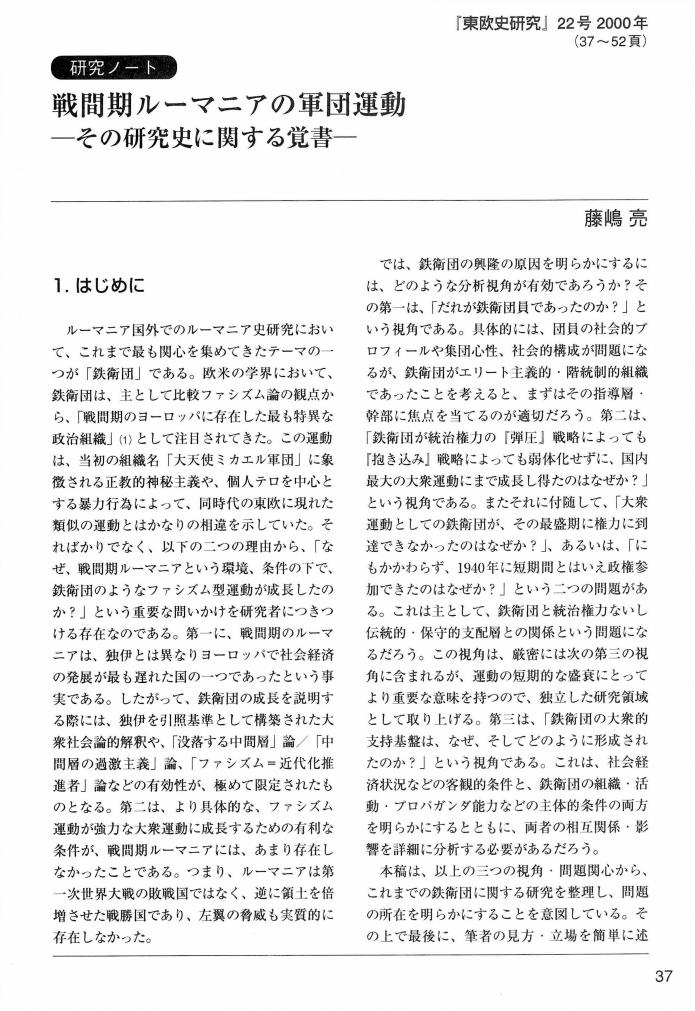4 0 0 0 IR ルーマニアのEU加盟と国内政治の変容--「欧州政党」と「姉妹政党」のダイナミクス
- 著者
- 藤嶋 亮 FUJISHIMA Ryo
- 出版者
- 明治学院大学国際学研究会
- 雑誌
- 国際学研究 (ISSN:0918984X)
- 巻号頁・発行日
- no.37, pp.95-99, 2010-03
本稿では,PES(及び社会主義インターナショナルSI)とルーマニアの左派政党の関係を中心に,「欧州政党Europarty」と新規加盟国の「姉妹政党」との対応関係の形成(グループ化)と,それが当該国の政党配置や政党競合に与えた影響について試論的に述べてみたい。【研究メモ/Research Memorandum】
- 著者
- 藤嶋 亮
- 出版者
- 日本比較政治学会
- 雑誌
- 日本比較政治学会年報 (ISSN:21852626)
- 巻号頁・発行日
- vol.16, pp.129-155, 2014 (Released:2020-03-16)
- 参考文献数
- 24
1 0 0 0 OA CHAPTER 8 半大統領制と政党間競合 ――ルーマニアとブルガリアの比較から――
- 著者
- 藤嶋 亮
- 出版者
- 日本比較政治学会
- 雑誌
- 日本比較政治学会年報 (ISSN:21852626)
- 巻号頁・発行日
- vol.18, pp.209-237, 2016 (Released:2020-03-16)
- 参考文献数
- 17
- 著者
- 藤嶋 亮
- 出版者
- ロシア・東欧学会
- 雑誌
- ロシア・東欧研究 (ISSN:13486497)
- 巻号頁・発行日
- vol.2012, no.41, pp.3-18, 2012 (Released:2014-05-27)
- 参考文献数
- 37
Fierce and continuous political battles broke out in Romania immediately after its accession to the European Union (EU) in 2007, with President Traian Băsescu’s leadership style as the main issue. Băsescu declared that he would be an activist president, a “player-president,” who would advance his own political agenda, control the parliamentary majority, and actively shape policy. He fulfilled this vision to some extent and won the re-election; however, the Romanian Constitution stipulates the role of president as a mediator and obliges him/her to adopt a nonpartisan stance. Moreover, since the late nineties, semi-presidential systems in Central and Eastern Europe (except the former USSR) have tended to be more parliamentarian, shifting supreme executive power from the president to prime minister. Thus, Băsescu’s presidency poses the difficult and interesting question for scholars: Why and how might President Băsescu behave as a “player-president”? To answer this question we must analyze the resources for presidential leadership in the semi-presidential context. Here we can identify three factors of particular importance: the president’s constitutional power; partisan power, focusing on the nature of the parliamentary majority and relationship between the president and majority; and the president’s popularity. The present study describes and analyzes the successes and failures of Băsescu’s initiatives during the period between December 2004 and August 2012 from the perspective of these three factors. Specifically, we focus on the following three situations in which the president’s action became a serious issue: “government formation,” “intraexecutive conflict,” and “referendum.” To examine specific constellations of political resources available for each actor, especially the president, we take the constitutional text as our starting point. The Constitution’s ambiguity allowed the president to expand his formal institutional capacity. For example, according to the Constitution, the Romanian President must consult with the parties in Parliament when nominating the prime minister. However, Băsescu always declared that he would nominate a member as the prime minister from the party or alliance that supported him before he officially consulted other parties in Parliament, and he continued holding initiatives to choose the prime minister. Here, two other factors played an important role. Băsescu was the recognized leader of the parliamentary majority, especially between December 2008 (when his party, the PDL (former PD) became the top party in the general election) and spring 2012 (when the governing coalition collapsed). Furthermore, the president maintained high popularity until the economic crisis worsened and his PDL government introduced austerity measures in spring 2010. His partisan power and popularity enhanced Băsescu’s constitutional power, making him a president with considerable material power. In addition, the president is the only office holder who is popularly elected nationwide. Therefore, winning the post gave him additional leverage, especially immediately after winning the elections. In this context, the threat to dissolve Parliament, which is very difficult according to the constitutional provisions, could be a bargaining chip for him. At the same time, the lack of party discipline and cohesiveness expanded the president’s room for maneuvering. However, Băsescu’s actions to avoid “cohabitation” (sharing power) as much as possible caused political polarization and led to the suspension of the President by the Parliament twice.
1 0 0 0 OA 戦間期ルーマニアの軍団運動 ―その研究史に関する覚書―
- 著者
- 藤嶋 亮
- 出版者
- 東欧史研究会
- 雑誌
- 東欧史研究 (ISSN:03866904)
- 巻号頁・発行日
- vol.22, pp.37-52, 2000 (Released:2018-12-01)
- 著者
- 藤嶋 亮
- 出版者
- 日本比較政治学会
- 雑誌
- 日本比較政治学会年報
- 巻号頁・発行日
- vol.16, pp.129-155, 2014
- 著者
- 藤嶋 亮
- 出版者
- 東欧史研究会
- 雑誌
- 東欧史研究 = The Journal of East European studies (ISSN:03866904)
- 巻号頁・発行日
- no.42, pp.63-69, 2020-03
1 0 0 0 戦間期ルーマニア議会政治の隘路
- 著者
- 藤嶋 亮
- 出版者
- 明治学院大学国際学部
- 雑誌
- 国際学研究 (ISSN:0918984X)
- 巻号頁・発行日
- no.39, pp.63-86, 2011-03


